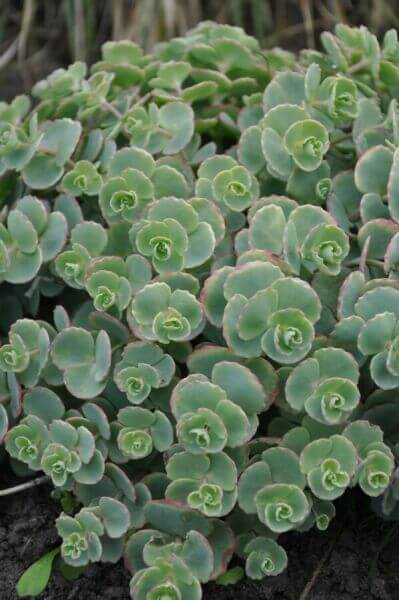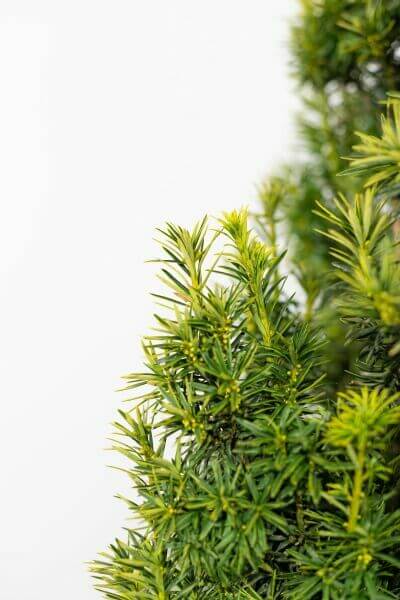Hedge Plants For Formal Borders
Improve your garden's attraction with lavish hedge ranges such as Yew (Taxus), Thuja, Laurel, Photinia, and Bamboo, celebrated for their structural stability and environmental advantages.
Yew and Thuja offer evergreen protection and winter strength, while Laurel provides quick growth and broad, aromatic leaves.
Photinia adds seasonal beauty with its vibrant red foliage, and Bamboo provides a low-maintenance, tranquil ambiance.
These hedges improve air quality, lower noise, and produce tranquil, personal spaces.
Proper planting, spacing, and upkeep guarantee energetic development and environmental consistency.
Explore how these lavish varieties can raise your garden's beauty and well-being.
Secret Takeaways
Transform Your Garden With Lush Hedge Varieties
- Select Yew for its thick, evergreen development and unrivaled longevity.
- Go with Laurel for its fast growth and broad leaves, guaranteeing fast personal privacy.
- Pick Photinia for its vibrant seasonal foliage, which turns a striking dark red.
- Utilize Bamboo for a low-maintenance, winter-hardy hedge with aesthetic appeal.
- Space plants 2-3 per meter and prune routinely for ideal development and health.
Popular Hedge Plants
When changing a garden with lavish hedge varieties, it's important to think about popular hedge plants such as Yew, Thuja, Laurel, and Photinia due to their special attributes and advantages.
Yew (Taxus) is extremely respected for its durability and thick, green growth, making it a prime choice for enduring landscapes.
Thuja is noted for its evergreen foliage and robust winter strength.
Photinia includes seasonal vibrancy with red leaves that darken with time, creating dynamic visual appeal.
Laurel provides rapid growth and fragrant, broad leaves, ideal for fast personal privacy.
Furthermore, Bamboo is an exceptional option for atmosphere, providing a low-maintenance, winter-hardy choice that enhances the garden's aesthetic with its classy, swaying walking canes.
These choices accommodate a variety of horticultural requirements and preferences.
Benefits of Garden Hedges
Garden hedges provide a plethora of benefits, making them a valuable addition to any landscape. These natural barriers are cost-efficient to execute and provide substantial wind security, enhancing air blood circulation and contributing to sound decrease. The dense foliage of hedges like Thuja and Beech makes sure privacy by blocking exposure, creating a tranquil and remote environment.
Hedges likewise play a vital function in microclimate regulation, supplying a stable environment that cultivates plant development and lessens temperature fluctuations. Their complex leaf structures filter pollutants, enhancing air quality and adding to a healthier garden environment.
Moreover, hedges stand out in noise decrease, absorbing and deflecting sound waves to lower ambient sound levels. This dual performance of supplying both acoustic and visual personal privacy enhances the total tranquility and visual appeal of any garden.
Planting and Upkeep Tips
For a successful hedge, precise preparation of the planting location is important. Make sure the soil has proper pH and drainage to support strong root development.
Area the plants properly for the picked species. Water the hedge regularly throughout its preliminary growth stage, changing as required with seasonal modifications.
Carry out a organized insect control and illness prevention technique, using chemical or natural treatments when essential. Frequently examine for aphids, termites, and fungal infections.
Apply mulch to keep wetness and reduce weeds. Seasonal pruning promotes dense growth and air flow, important for plant health.
Following these guidelines will help you cultivate a lively, well-maintained hedge that enhances the appeal of your garden.
Spacing and Cutting Guidelines
Spacing and Trimming Guidelines
Proper spacing and trimming are essential for cultivating healthy, aesthetically appealing hedges. Appropriate spacing makes sure each plant gets adequate nutrients, light, and airflow.
Follow these guidelines for optimum hedge upkeep:
- Spacing: Position hedge plants 2-3 plants per meter to encourage robust growth.
- Pruning Strategies: Regular pruning is essential for keeping preferred hedge height and shape. Trim new development in summertime and cut back older wood throughout winter.
- Seasonal Care: Adjust trimming techniques and schedules according to seasonal requirements to guarantee plant health.
- Hedge Height: Regularly display and trim to keep the preferred hedge height and achieve uniform visual appeals.
Abiding by these steps will guarantee your hedge thrives, boosting both the appeal and functionality of your garden.
Picking the Right Hedge
Choosing the Right Hedge
Selecting the proper hedge includes evaluating factors such as mature height, foliage density, and ecological resilience. Effective hedge plant choice requires comprehending each species' growth characteristics and site-specific flexibility.
For example, Yew (Taxus) provides exceptional longevity and dense development, while Thuja is notable for its winter durability. Additionally, considering upkeep requirements is essential; fast-growing species like Laurel or Privet need routine trimming, whereas low-maintenance options like Bamboo or Ivy may be more suitable for those seeking very little maintenance.
Ecological aspects such as soil type, light availability, and moisture conditions need to also direct the choice procedure. This careful technique makes sure the chosen hedges will thrive, offering both functional and aesthetic benefits to the garden landscape.
Delivery and Planting Recommendations
To ensure your hedge plants flourish, they ought to be provided by specialized couriers and planted without delay upon arrival.
Follow these important steps for successful planting:
- Soil Preparation: Improve the soil with natural matter to enhance drainage and nutrient content.
- Planting Depth: Produce a trench twice the width and equivalent to the depth of the root ball.
- Watering Strategies: Water thoroughly after planting, keeping the soil consistently wet however not saturated.
- Mulching: Use a layer of mulch to retain moisture and reduce weeds.
Consumer Support and Service
Provided the important function of prompt assistance in horticultural pursuits, our customer assistance team is available six days a week through telephone, email, and social networks to use skilled guidance and quickly attend to any issues. Their devotion to quick reaction times guarantees client fulfillment by fixing inquiries related to plant health, optimal planting methods, and maintenance schedules.

-------------------
Within 24 hours
This extensive support group, reinforced by an outstanding 9.3/ 10 client score, highlights our dedication to boosting the gardening experience for every single client.
Frequently Asked Questions
How Long Does It Take for Hedge Plants to Establish?
Hedge plants typically need one to 3 years to end up being totally developed, with the specific period differing by types and growing conditions.
Reliable care throughout this vital duration is vital for robust growth. Consistent watering, alert weed control, and proper fertilizer application are essential in promoting strong root development.
For example, fast-growing species like Laurel may establish quicker, while slower-growing ranges such as Yew may take longer. Thorough upkeep speeds up the facility procedure, leading to healthy and dense hedges.
What Are the Best Hedge Plants for Privacy?
The concern of the finest hedge plants for personal privacy involves evaluating evergreen and deciduous alternatives.
Evergreen hedges like Thuja, Laurel, and Cypress provide year-round coverage, ensuring continuous personal privacy.
On the other hand, deciduous hedges such as Beech provide seasonal privacy, shedding leaves in colder months.
Secret maintenance tips for personal privacy hedges include regular cutting, fertilizing in spring, and appropriate spacing-- typically 2 to 3 plants per meter.
In addition, consistent watering and diligent weed elimination are vital for promoting healthy, dense growth.
Can Hedge Plants Draw In Wildlife to My Garden?
Yes, hedge plants can attract wildlife to your garden by supplying important advantages like shelter, food, and nesting sites, consequently enhancing regional biodiversity. Yew, holly, and laurel are excellent for drawing in birds, while ivy supports a range of pests.
However, it is necessary to keep in mind that there are some drawbacks, such as increased upkeep to manage insects and routine upkeep. Thoroughly selecting and preserving hedge ranges can help stabilize these disadvantages and advantages, ultimately promoting a lively and sustainable environment in your garden.
Are There Any Blooming Hedge Plants Available?
Yes, there are flowering hedge plants readily available that can enhance the charm of your garden.
For instance, Elaeagnus, also called Olive Willow, produces aromatic white flowers in the fall, including a touch of elegance.
Photinia, another popular choice, showcases dynamic red leaves that grow into an abundant green, creating a dynamic visual impact throughout the seasons.
To make sure these plants grow, it's important to practice proper pruning methods and seasonal upkeep, such as cutting brand-new development in the summer and cutting back in the winter.
These steps will assist keep the health and visual appeal of your blooming hedges.
How Do I Avoid Bugs in My Hedge Plants?
To avoid bugs in hedge plants, use natural bug control methods and maintain proper hedge care. Introduce advantageous bugs like ladybugs, which take advantage of hazardous bugs, to produce a balanced community.
Routinely examine your hedges for signs of invasion and promptly remove any afflicted parts to avoid the spread. Make sure the health of your hedges by using balanced fertilizers and offering adequate water.
Utilize mulching to maintain soil wetness and appropriate spacing to minimize plant stress and promote robust growth. These practices jointly assist in lessening insect problems and maintaining a healthy hedge.
Conclusion
In essence, picking the ideal hedge ranges such as Yew, Thuja, and Laurel can transform any garden into a peaceful haven. read more These plants supply year-round plant, enhance visual appeal, and deal practical advantages like sound reduction and wind defense.
Appropriate planting techniques, precise spacing, consistent watering, and seasonal trimming are essential for ideal growth.
Reliable delivery services and expert consumer support make sure a seamless experience from purchase to planting, making it simpler than ever to raise your outside area.
Garden hedges offer a multitude of advantages, making them a valuable addition to any landscape. These natural barriers are cost-efficient to execute and supply considerable wind protection, improving air circulation and contributing to noise decrease. The dense foliage of hedges like Thuja and Beech makes sure privacy by blocking visibility, developing a secluded and peaceful environment.

Pruning Methods: Regular pruning is essential for keeping wanted hedge height and shape. Trim new development in summertime and cut back older wood during winter season.